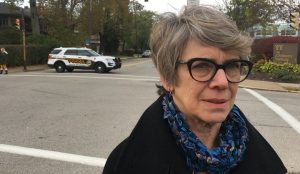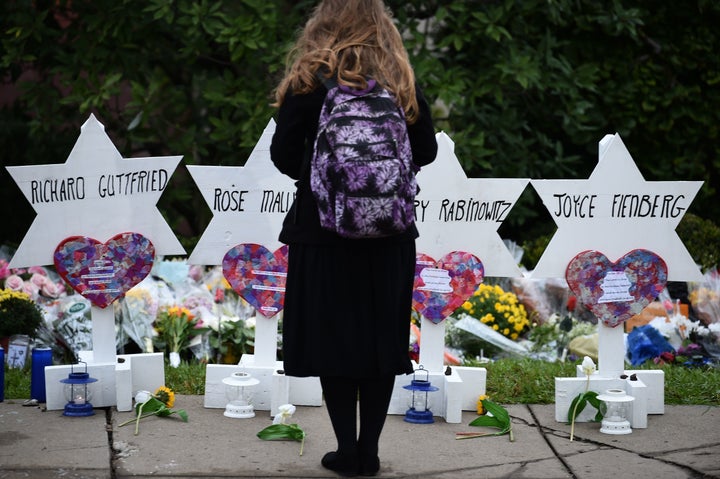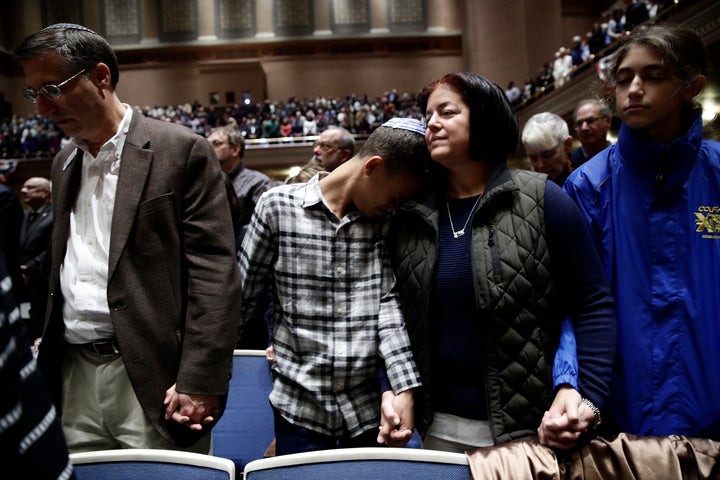PITTSBURGH — Susan Friedberg Kalson remained close to the synagogue where daily prior a colleague of hers was executed and a family companion was severely harmed. Tears welled in her eyes and words got in her throat as she related the frightfulness, all things considered, At that point, she saw a natural face. “This is a companion I have to embrace for a second,” she stated, pardoning herself.
Kalson, 59, and the companion, a lady about a similar age, held one another. “Simply call me when you need to talk,” the lady told Kalson. “Simply call me.”
“That is the network,” Kalson told HuffPost a short time later. “You actually can’t go a square without seeing somebody, and much of the time somebody you’ve known for your entire life.” Kalson grew up here, in the Squirrel Hill neighborhood of Pittsburgh. She raised a family here. She runs a wellbeing focus here. She goes to sanctuary here.
On Saturday, a racial oppressor came here. He strolled into the Tree of Life synagogue with a weapon and slaughtered 11 individuals, submitting the deadliest enemy of Semitic assault in U.S. history. The assault has pushed Squirrel Hill ― undeniably Mr. Rogers’ neighborhood ― into national features. Dynamic and tight-sew, beautiful and tree-lined, home to one of the biggest and most famous Jewish people group in the U.S., Squirrel Hill, all things considered, wasn’t safe to dread.

Susan Friedberg Kalson says a co-worker of hers was killed at Saturday’s mass shooting at the Tree of Life temple in Pittsburgh.
Kalson said a nearby family companion was harmed in Saturday’s shooting, yet that she couldn’t discuss it ― somewhat in light of the fact that she didn’t have the family’s favored to do as such, and halfway on the grounds that she just couldn’t yet.
She could notwithstanding, discuss a man who had been slaughtered: Dr. Richard Gottfried, whom Kalson depicted as “kind and delicate.” When Gottfried, 65, wasn’t running his private dental practice with his better half, he worked one day seven days at the Squirrel Hill Health Center, where Kalson is CEO.
The inside gives care paying little mind to one’s protection status or capacity to pay. Some portion of its central goal is to serve outsiders and displaced people. “Rich was exceptionally given to his Judaism, and I realize that he asked not simply week by week ― he just went to morning minyans likewise, and the work he did to help other people became out of that,” Kalson said.
That Gottfried helped workers and outcasts felt particularly piercing for Kalson. The supposed shooter had been propelled, to some extent, by the unjustifiable enemy of the Semitic paranoid idea that Jews are subsidizing the migration of non-whites into the U.S.
Kalson noticed that at Shabbat administrations Saturday at synagogues around the globe, including at Tree of Life, the Torah perusing recounted the tale of Abraham and Sarah inviting outsiders into their tent. “That is the thing that we live by,” she said.
A stroll around Squirrel Hill Sunday recommended that to be valid. Yard signs proclaimed in English, Spanish and Arabic that “regardless of where you are from, we’re happy you’re our neighbor.”

Outside the synagogue, police allowed mourners to lay flowers and notes on the lawn. “We won’t forget how you spread kindness so we will do the same to the world,” one 7-year-old wrote.
It’s turned into a very natural American custom: the laying of blossoms at the scene of a despise wrongdoing. At the present time, there are blossoms outside a market in Jeffersontown, Kentucky, where a white man a week ago killed two dark Americans, Maurice Stallard, and Vickie Lee, Jones. There were blossoms for Heather Heyer in Charlottesville. Blooms for Ricky John Best and Taliesin Myrddin Namkai-Meche in Portland. For Timothy Caughman in New York. For Srinivas Kuchibhotla in Olathe, Kansas. For Khalid Jabara in Tulsa. For the nine dark Christians murdered in Charleston. For the six Sikhs in Oak Creek.
In light of the Pittsburgh shooting, interfaith activists met up and sorted out a vigil. On Sunday night, a huge number of Pittsburghers of various religions filled the Soldiers and Sailors Memorial Hall in the Oakland area of the city. Every one of the seats was taken. Guardians sat on the floor with kids in their laps. The individuals who couldn’t fit in the corridor remained outside wide open to the harsh elements and tuned in. Government officials in suits sat in the first line and in front of an audience.

The Rodman Street Baptist Church Choir began things off, singing underneath a goliath engraving of the Gettysburg Address on the hall divider.
The whole group of onlookers ascended for the grieving kaddish — a supplication for the dead. At that point the three rabbis from Tree of Life alternated at the platform, offering messages of resistance.
“What happened yesterday won’t break us,” Rabbi Jonathan Perlman told the group. “It won’t demolish us.”
“Scorn and hostile to Semitism are not old musings, and they’re not new considerations. They just never appear to leave,” Rabbi Cheryl Klein said. “In spite of the fact that we are broken, these demonstrations of viciousness won’t characterize our deepest desires for the future, and we will never give disdain a chance to be the victor. Never.”
Tree of Life has lost 11 branches, Rabbi Jeffrey Meyers told the group. “However, we’ve been here 154 years. We have much more branches.”
At a certain point, Wasi Mohamed, official executive of the Islamic Institute of Pittsburgh, made that big appearance. With tears in his eyes, he declared that the neighborhood Muslim people group had raised over $70,000 for the people in question and their families. The group reacted with an overwhelming applause.
“When I glance back at this day, I’m not going to recollect one individual loaded up with murkiness,” Mohamed told the group. “I will recall the light. I will recollect a large number of individuals who showed up today or who are supporting us from all around the nation. A huge number of individuals loaded up with affection and expectation.”
Kalson was at the vigil. “That is our locale,” she said the following day in an instant message.
“We will keep on opening our entryways and arms and our hearts as wide as possible,” she composed. “It’s the main route through this.”

















